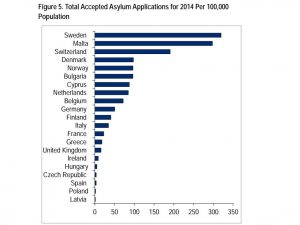Reinforcing Social Constructs
Francesco Vacchiano’s article reflects the dynamic between those who have power over their mobility and those who do not; the tension between those who seek safety in another land and those keep them out. As a Hungarian (a nation notorious for their egregious dismissal of taking in migrants or refugees), Vacchiano addressed the main excuse I hear for rejecting migrants and refugees: scarcity. The idea that scarcity is a driving force lies much deeper than a simple distribution of wealth. In fact, it is how this wealth is distributed in the E.U. that gives the small percentage of Europeans who have it the ability to close borders to those who must cross them. In this way, the argument collapses on itself – if E.U. states find a better way to redistribute wealth, they can accommodate larger numbers of incoming migrants and refugees, as well as better support their current populations as well. Although this is not likely to occur soon, Vacchiano shines a light on this profound excuse with no foundation.
Hungary is one of the lowest to take in refugees and claims to be one of the countries with the least amount of necessities to do so.

The Positionality of the Latino – America’s Migrant Worker, reflects how the service industry has provided a platform to racially categorize Latinos, allowing a direct view into the implications race has on the American employment system. In many ways, the placement of Latinos in the lowest-wage and lowest-visibility positions in the service industry reflects the ideals of segregation- forcing those with the most limited power into spaces with even less control. The idea behind it all being that the less power minority groups have, the more those who embody American-ness can keep these constructs in place. The paradox here lies in the vagueness of the Latino race, as defined by American standards. “Latinos” who can fit into the American-ness mold may (rarely) escape completely from these oppressive constructs or work their way up the superiority/insider-ness axis – reinforcing the idea the race is just a social construct, as proven in the Plessy v. Ferguson case regarding segregation in the late 1800s. Although we no longer legally enforce segregation, the social of minorities in the workforce continue its social and economic effects, reinforcing the pressure minorities feel on their ability to climb out of spaces of invisibility.
Recent Comments